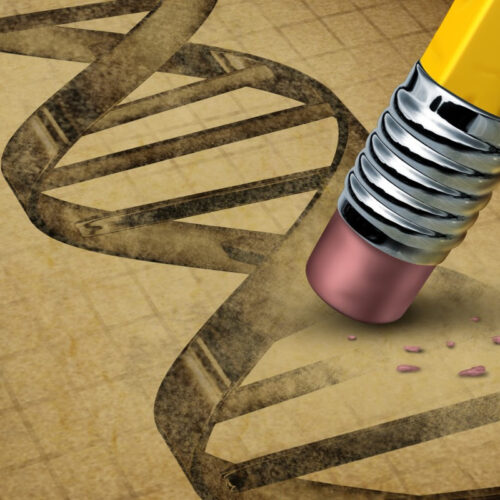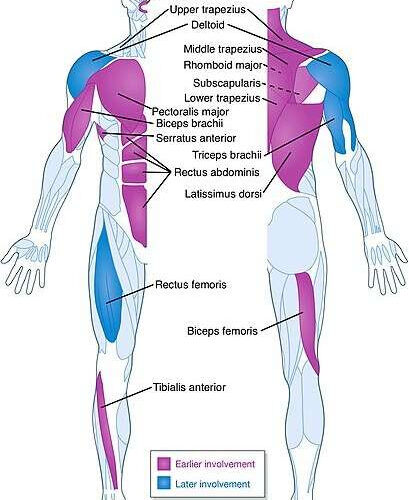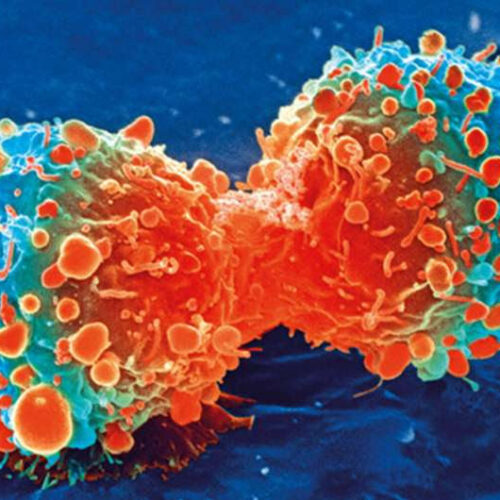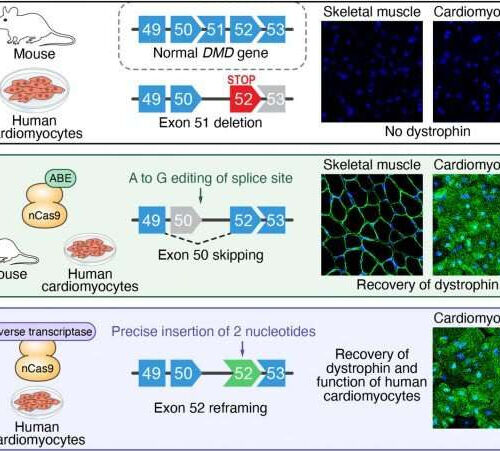By Michael Irving September 16, 2021 MIT researchers have discovered a new class of enzymes that could open a new range of genetic engineering tools like CRISPRlightsource/Depositphotos One of the most revolutionary discoveries of the century, the CRISPR gene-editing system is built on a bacterial defense mechanism that allows scientists to make precise edits to DNA. Now...
Tag: <span>Gene editing</span>
Researchers use gene editing to tackle facioscapulohumeral muscular dystrophy
by Florida State University A diagram showing the muscles commonly involved in FSHD. Muscles most frequently involved are shown in pale purple and those with later involvement are shown in blue. Pathomechanisms and biomarkers in facioscapulohumeral muscular dystrophy: roles of DUX4 and PAX7. EMBO Mol Med (2021)e13695. Credit: Christopher R S Banerji Peter S Zammit, edited...
Are we ready? Advances in CRISPR means the era of germline gene editing has arrived
by Delthia Ricks , Medical Xpress Credit: CC0 Public Domain Quick, accurate, and easy-to-use, CRISPR-Cas9 has made genomic editing more efficient—but at the same time has made human germline editing much more feasible, erasing many of the ethical barriers erected to prevent scientists from editing the genes of heredity. “The ethical debate about what is...
Team reports how gene editing iPS cells can lead to a universal cancer immunotherapy product
by Kyoto University Cancer cell during cell division. Credit: National Institutes of Health Cancer immunotherapies have made the news for their startling effectiveness against certain cancers. However, current clinical therapies mainly use the patient’s own cells, limiting the number of patients who have access to this cure. CiRA Professor Shin Kaneko is developing iPS cells technology...
Gene editing expands to new types of immune cells
by Gladstone Institutes Alex Marson (left), Nevan Krogan (right), and their team fine-tuned CRISPR-Cas9 genome editing to work on human immune cells called monocytes. Credit: Michael Short/Gladstone Institutes In the decade since the advent of CRISPR-Cas9 gene editing, researchers have used the technology to delete or change genes in a growing number of cell types. Now,...
New gene editing strategies developed for Duchenne muscular dystrophy
by UT Southwestern Medical Center In a mouse model and in human heart muscle cells, researchers used gene editing to modify specific DNA sequences and restore dystrophin production in mutant dystrophin genes. Credit: UT Southwestern Medical Center UT Southwestern scientists successfully employed a new type of gene therapy to treat mice with Duchenne muscular dystrophy (DMD),...
Intellia announced a new tool for gene editing
Jason Mast Editor Alexis Komor David Liu, the Harvard biochemist, was sitting in a meeting last week when his phone started buzzing repeatedly. Unbeknownst to him, minutes prior the CRISPR company Intellia had finished unveiling their approach to base editing at a Cold Spring Harbor Lab conference. First pioneered by Liu and his lab in...
Gene editing enables researchers to correct mutation in muscle stem cells in DMD model
by University of Missouri Duchenne muscular dystrophy (DMD) is a rare but devastating genetic disorder that causes muscle loss and physical impairments. Researchers at the University of Missouri School of Medicine have shown in a mouse study that the powerful gene editing technique known as CRISPR may provide the means for lifelong correction of the...
New CRISPR enzyme (Cas12b) makes for more precise gene-editing
The CRISPR gene-editing tool may be one of the most important medical breakthroughs in decades, but there’s still plenty of room for improvement. Although Cas9 has been the go-to enzyme for gene-editing, that doesn’t mean it’s necessarily the best option. Now a team of scientists, including the co-creator of CRISPR, has engineered a more precise...
Scientists make first ever attempt at gene editing inside the body
New therapy will permanently alter DNA, with no way to alter mistakes editing may cause – but offers chance to tackle currently incurable metabolic diseases Brian Madeux, 44, sits with his girlfriend Marcie Humphrey, waiting to receive the first human gene editing therapy. Scientists have tried editing a gene inside the body for the...







